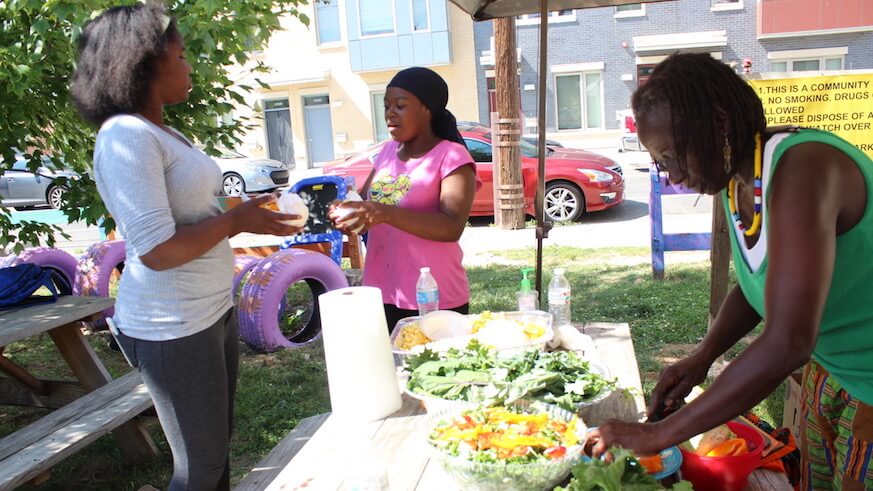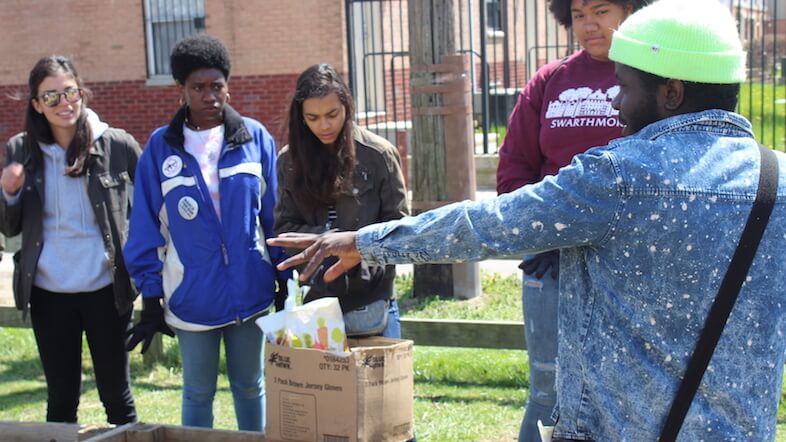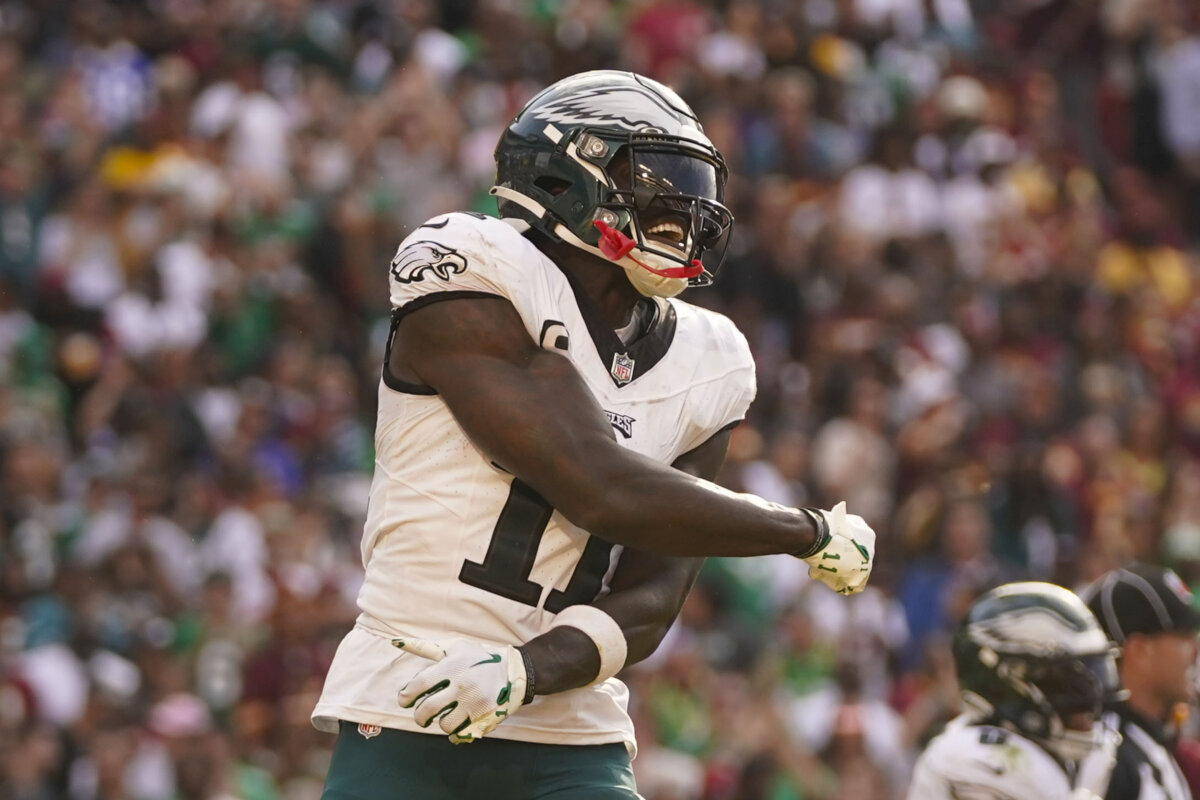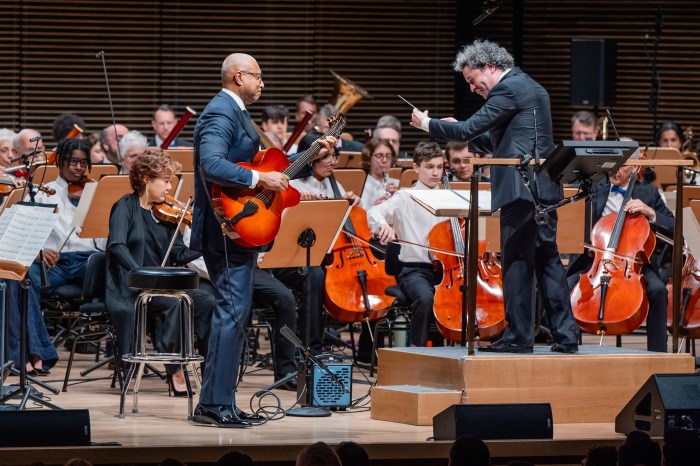With a high level of community involvement and innovative design work, the North Philly Peace Park is set to dispel the myths and stereotypes commonly associated with inner-city life.
Founded in 2012 by African American activists, educators and artists in the footprint of a Philadelphia Housing Authority (PHA) project, the North Philly Peace Park (NPPP) was conceptualized with the goal of creating a fence-free eco-campus that would focus on creating science, technology, engineering, arts and mathematics education (STEAM) afterschool programs for youth as well as providing free food for the community.
On July 6 during a panel discussion at the Barnes Foundation, NPPP’s design team and architects unveiled designs for a proposed pavilion to host these efforts, alongside the growing of fresh produce they have undertaken since 2012.
For Philly entrepreneur Tayyib Smith, who spoke on the panel, NPPP’s efforts can possibly change the way people outside of the city look at North Philadelphia. “Historically, when you talk about North Philadelphia, particularly people who grew up in the suburbs associate it with violence, blight, divestment and all kinds of stereotypes of broken cities,” Smith said.
Smith also believes that NPPP’s existence as a safe space for people of color is important because of gentrification’s rapid movement throughout Philadelphia. “Particularly in the last 30 years, with the amount of violence that has happened in the black community, the concept of peace and a place to go be free and that’s not anti-black is really very important in a city that’s going through hyper-gentrification,” he said.
As one of the architects behind NPPP working with the Bohlin Cywinski Jackson architecture firm, Nyasha Felder is transparent about its mission in helping to improve the Sharswood community. “There are a lot of issues associated with the Sharswood neighborhood, particularly blight, poverty, a lack of security and food deserts,” Felder said.

According to Felder, NPPP has the potential to transform the physical space in Sharswood that it occupies while changing the way local residents think about growing healthy food. “It has been the goal of North Philly Peace Park to rehabilitate these abandoned spaces but also to serve as an environment that teaches urban farming techniques and healthy living for local communities; and also to maintain cultural significance with a space within a changing contemporary urban environment by creating value,” she said.
Notably, Felder was strongly influenced by Afrofuturism in organizing early design work for North Philly Peace Park. Afrofuturism is a reimagining of arts, technology and history through a black lens. According to Felder, NPPP’s design is based on a combination of West African temple designs and American Southern porch topology inspired by African slave builders.
By addressing common social problems that affect inner-city communities, Felder ultimately believes that NPPP can help bridge the gap between today and a better tomorrow. “As urban populations continue to grow, food shortages are becoming more prevalent. It is our mission to see the potential in abandoned land and food deserts and to become productive sources of food supply and community building. The school anchors the community as an asset, as a part in agricultural peace town plan that cast away shadows to illuminate the possibilities for a brighter future,” she said.
Philly Peace Park
North Philly Peace Park is located at the corner of 22nd and Jefferson streets at 2200 W. Jefferson Street and occupies approximately 25,000 square feet.
North Philly Peace Park’s primary objectives are to provide the Sharswood neighborhood with healthy food options, provide education for young people and to stimulate the microeconomy.
Afrofuturism—a reimagining of arts, technology and history through a black lens—played an integral part in the design process for North Philly Peace Park.
The Philadelphia Housing Authority said it is “supportive” of NPPP’s work and plans for an educational pavilion.
Timeline
2012 – The North Philadelphia Peace Park is founded by activist farmer Tommy Joshua on vacant land near the Blumberg-Sharswood Housing Project to provide the neighborhood, a food desert, with fresh produce.
Late 2014 – The PHA fenced off the park to move forward with plans to construct new public housing and demolish the old.
2015 – Philly Peace Park moves their operation to another vacant PHA lot just blocks away at 22nd and Jefferson.
2017 – After years of tension over their quasi-legal status, the Philly Peace Park and PHA reached a tentative agreement to allow NPPP to continue their activities on the land, given PHA’s recognition of their commitment to the community.





























